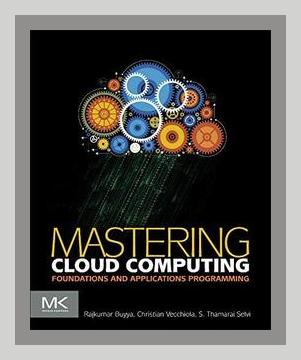Technology and Digital TransformationCloud Computing
ing Cloud Computing: Foundations and Applications Programming” by Rajkumar Buyya, Christian Vecchiola, and S. Thamarai Selvi, from 2013:
Summary of Mastering Cloud Computing: Foundations and Applications Programming
Chapter 1: Introduction to Cloud Computing
Key Points:
– Definition and Evolution: Cloud computing is defined as a model for enabling ubiquitous, convenient, on-demand network access to a shared pool of configurable computing resources.
– Service Models: The book categorizes cloud services into three primary models: Software as a Service (SaaS), Platform as a Service (PaaS), and Infrastructure as a Service (IaaS).
Concrete Examples:
– Google Docs (SaaS): Allows users to create, edit, and share documents online without needing to install software.
– Google App Engine (PaaS): Lets developers build and host applications on Google’s infrastructure.
– Amazon EC2 (IaaS): Provides scalable virtual servers for running applications.
Actions:
– Service Evaluation: Determine the best service model for your needs. If you’re focusing on applications, consider SaaS. If building a custom application, PaaS might be better. Infrastructure needs might call for IaaS.
Chapter 2: Principles of Parallel and Distributed Computing
Key Points:
– Parallel vs. Distributed Computing: Parallel computing involves simultaneous data processing to achieve faster results, whereas distributed computing involves a network of separate computers working together.
Concrete Examples:
– Hadoop: A framework that allows for processing large data sets across clusters of computers using simple programming models.
Actions:
– Framework Selection: For large-scale data processing, consider using Hadoop or similar frameworks to leverage distributed computing principles.
Chapter 3: Cloud Infrastructure
Key Points:
– Infrastructure Basics: Discusses virtual machines, networking, and storage systems.
– Data Centers: Physical and operational characteristics of data centers, which host cloud infrastructure.
Concrete Examples:
– Amazon S3: A storage service that provides scalable object storage.
– VMware: Used for creating and managing virtual machines on physical servers.
Actions:
– Infrastructure Mapping: Map out your cloud infrastructure, including storage, compute, and network needs before deployment to avoid bottlenecks.
Chapter 4: Cloud Platforms and Services
Key Points:
– PaaS Providers: The characteristics of various PaaS platforms, including Microsoft Azure and Microsoft .NET services.
– Service Integration: How different cloud services and platforms can be combined to complement each other.
Concrete Examples:
– Azure SQL Database: A managed cloud database provided by Microsoft.
– Salesforce’s Force.com: A PaaS that allows for rapid development and deployment of applications.
Actions:
– Platform Choice: Evaluate specific platform capabilities against your project needs. If heavy on database management, consider Azure SQL Database or similar offerings.
Chapter 5: Aneka – Integration of Private and Public Clouds
Key Points:
– Aneka Framework: A framework for developing cloud applications by enabling a composite infrastructure of public and private clouds.
– Task-based Programming: Using task, thread, and map-reduce models for application development.
Concrete Examples:
– FFT Implementation: A sample application using Aneka for Fast Fourier Transform (FFT) processing, illustrating how computational tasks are distributed and handled.
Actions:
– Implementing Aneka: For applications needing custom configurations and integration between private/public clouds, use Aneka as the middleware for managing tasks.
Chapter 6: Cloud Applications
Key Points:
– Application Scenarios: Various scenarios where cloud applications shine, such as healthcare, business, social networking, and scientific computing.
– Scalability: The inherent scalability offered by cloud platforms, enabling apps to handle variable loads seamlessly.
Concrete Examples:
– Healthcare: Use of cloud for electronic medical records.
– Business: ERP systems hosted on the cloud to improve accessibility.
Actions:
– Scenario Identification: Identify and experiment with cloud applications in various real-world scenarios. For instance, develop a test project in healthcare to understand the potential advantages.
Chapter 7: Advanced Topics in Cloud Computing
Key Points:
– Security and Privacy: Challenges and solutions related to ensuring data integrity, confidentiality, and availability in the cloud.
– Intercloud and Federation: Concepts of multiple cloud systems working together seamlessly.
Concrete Examples:
– Encryption Methods: Discussing AES encryption for securing data.
– Intercloud Use: Utilizing interconnected clouds for enhanced redundancy and resource availability.
Actions:
– Security Protocols: Implement stronger encryption and access control mechanisms in your cloud solutions to protect sensitive data.
– Intercloud Setup: Develop a proof-of-concept project that uses two different cloud providers for services to experience federated cloud benefits.
Chapter 8: Using Cloud Simulators
Key Points:
– CloudSim: An advanced simulator for cloud computing scenarios which enables researchers to model and simulate different cloud computing environments.
– Simulation Capabilities: Ability to model data centers, brokers, and virtual machines.
Concrete Examples:
– Data Center Simulation: Simulate different configurations of data centers to understand potential performance and costs.
Actions:
– Simulation Experimentation: Use CloudSim to test different architectural decisions before actual deployment to predict costs and performance metrics accurately.
Chapter 9: Workflow Tools
Key Points:
– Workflow Automation: Various tools and methods for automating workflows in cloud environments.
– Workflow Management: Strategies to efficiently manage resources and tasks.
Concrete Examples:
– Pegasus Workflow Management: Manages execution of large-scale workflows in diverse environments, optimizing resource usage.
Actions:
– Implement Automation Tools: Use tools like Pegasus to automate the deployment and execution of complex workflows, ensuring better resource management and efficiency.
Conclusion
“Mastering Cloud Computing: Foundations and Applications Programming” provides a comprehensive guide to understanding and harnessing the power of cloud computing. From the basics of cloud models to advanced concepts like security and cloud simulation, the book offers actionable insights and practical examples. By leveraging the principles and tools discussed, one can make informed decisions, efficiently manage cloud-based applications, and exploit the full potential of modern cloud computing environments.
